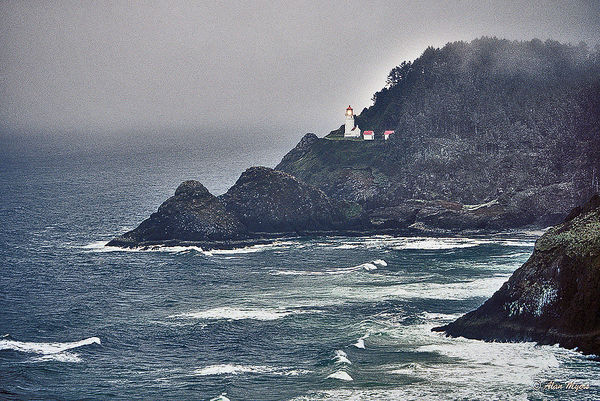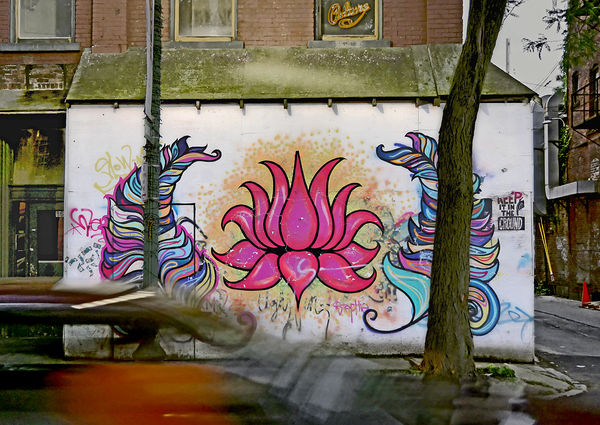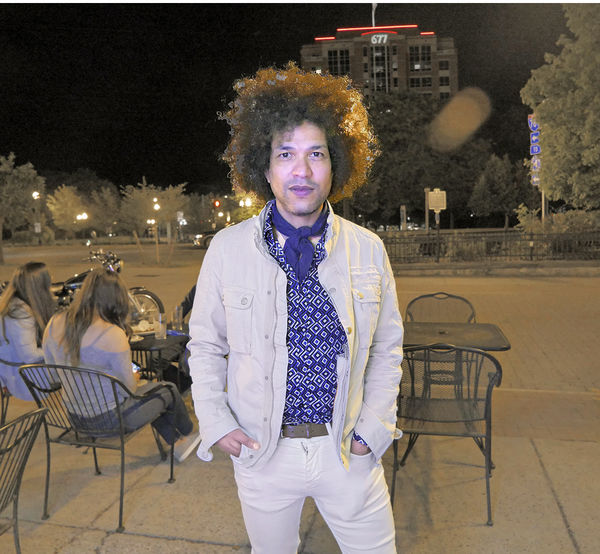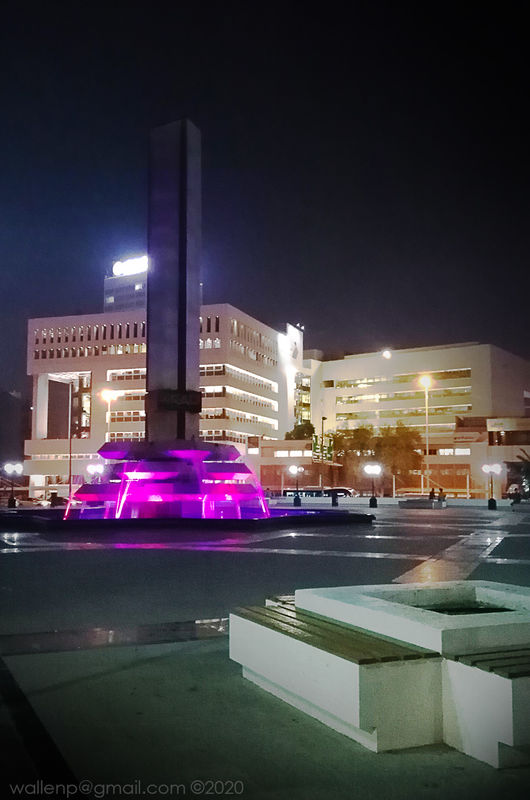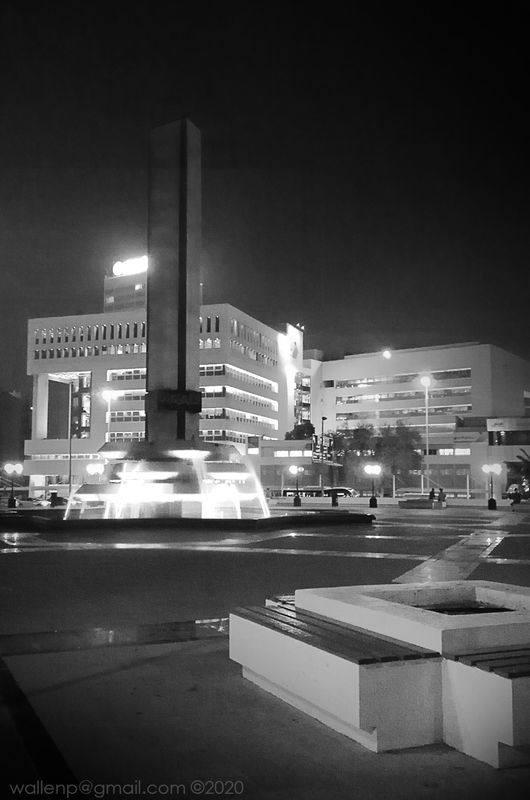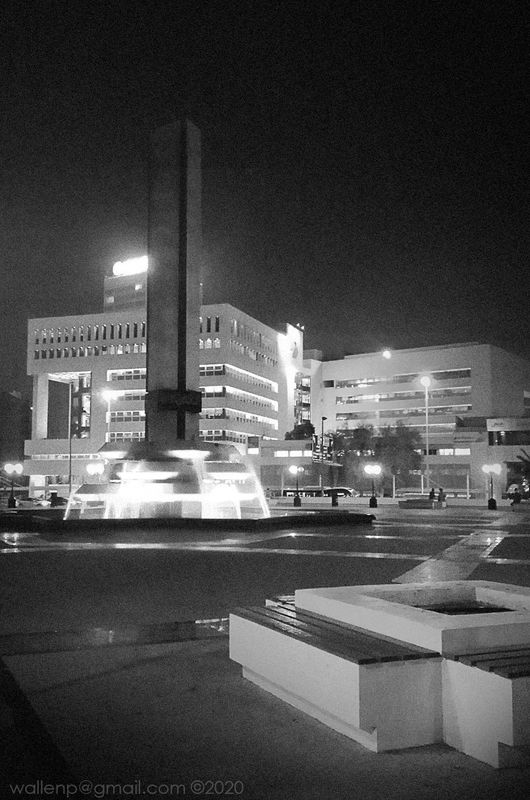Have any of you used "Noise" creatively in your photography?
Jul 25, 2018 15:09:38 #
amfoto1
Loc: San Jose, Calif. USA
Quote:
PS: Longer I look, more I lean toward dumping
texture filter. Not so much about any dislike of the
effect as a visual ploy, but more becuz the longer
I look the more I wonder what the scene really
looks like "naked". Yeah. I try to "undress it with
my eyes", but I wanna see it "take it all off" so I
can stop guessing :-)
PS: Longer I look, more I lean toward dumping
texture filter. Not so much about any dislike of the
effect as a visual ploy, but more becuz the longer
I look the more I wonder what the scene really
looks like "naked". Yeah. I try to "undress it with
my eyes", but I wanna see it "take it all off" so I
can stop guessing :-)
Okay, here's the image "before" the more extensive editing... pretty much a straight scan from the film, just a little sharpening...
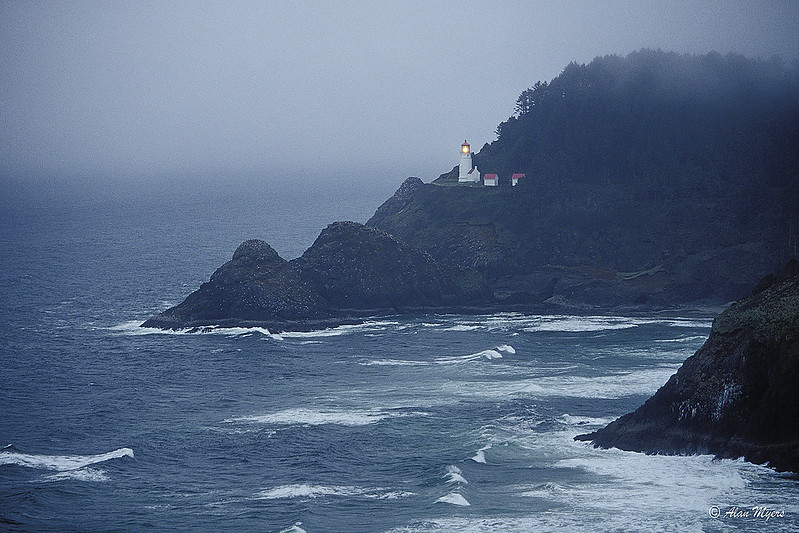
And here's the "grain filter added" (among other things) version again, for comparison...
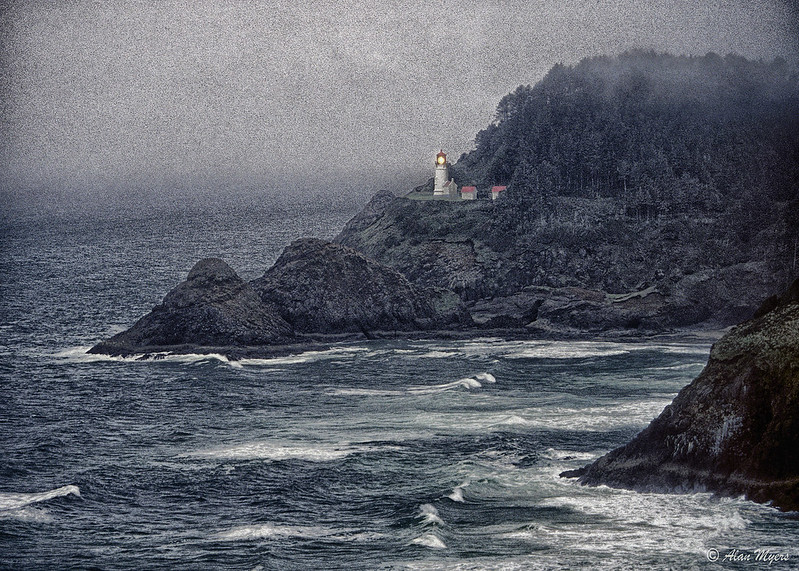
I still lean toward the "improved/grainy" version... the original just seems too "flat" and dull. I wanted to do something different by shooting the LH in the nasty weather and with the active surf, but had to shoot it quickly (I was getting soaked!) and just wan't happy with the original. I'm going to try a print from the new version of the image to see if I like it. Sometimes things look a lot different on paper, than they do on a computer monitor!
Jul 25, 2018 15:31:00 #
amfoto1 wrote:
Okay, here's the image "before" the more... (show quote)
The second one "grabs" me a lot more.
I see a lot of pretty pictures of sunny, lush landscapes, pretty yellow/red sunsets, etc. All nice and friendly environments. I've wondered how photographers approach conveying other environmental situations that are not so friendly: stormy weather, blazing desert heat, etc. You've given me a good example Alan....Thanks!
Jul 25, 2018 23:23:31 #
`
Thanks for posting the un-grained version.
But I was not asking to see the sooc which
IMNSHO "aint nobody's bidnez" but yours.
What I'd hoped to see was a "seasoned to
taste" edit, minus ONLY the grain filter. So,
I started with your sooc and made one. It
has no noise reduction, none added, and I
did NOT apply a grain filter. Not as if it's a
better edit. Just hadda see what the grain
"brought to the table" by leaving it off. So
for that I needed a comparison version a
bit closer to your final edit than the sooc.
The sooc wasn't telling me anything.
Thanks for posting the un-grained version.
But I was not asking to see the sooc which
IMNSHO "aint nobody's bidnez" but yours.
What I'd hoped to see was a "seasoned to
taste" edit, minus ONLY the grain filter. So,
I started with your sooc and made one. It
has no noise reduction, none added, and I
did NOT apply a grain filter. Not as if it's a
better edit. Just hadda see what the grain
"brought to the table" by leaving it off. So
for that I needed a comparison version a
bit closer to your final edit than the sooc.
The sooc wasn't telling me anything.
Jul 26, 2018 13:54:07 #
amfoto1
Loc: San Jose, Calif. USA
User ID wrote:
` br br Thanks for posting the un-grained ve... (show quote)
Well, the reason I posted the SOOC version was simply because I don't have an example "mid-process"... Unfortunately I only have the original film scan/mostly SOOC version and the second one with various adjustments including the added "grain". Your experiment removing the grain is probably the best way to see what it would look like without... to decide whether or not the grain adds to the image.
srt101fan, I've often gone out of my way to shoot in what some might think are crazy conditions. I find them more interesting than "more normal/pretty" shots....
Impending storms...


Twilight and "light-polluted" night shots...



Rainy weather...


Dust and fog...
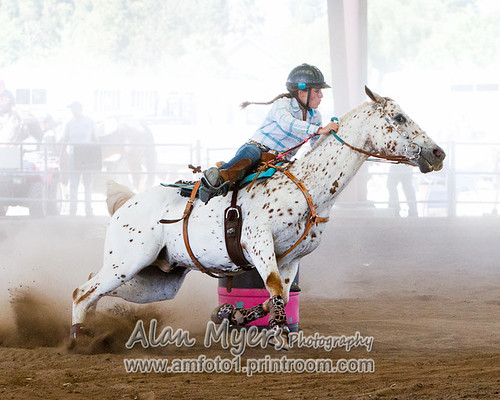

When other folks are giving up on the light or running for cover and putting their cameras away to "protect" them... I'm the fool who keeps shooting!
Jul 26, 2018 14:03:29 #
One of the best things about copying or scanning old film images is the ability to soften or nearly REMOVE grain from images that do not benefit from it.
Jul 26, 2018 15:36:42 #
amfoto1 wrote:
...........
I've often gone out of my way to shoot in what
some might think are crazy conditions. I find them
more interesting than "more normal/pretty" shots....
..............
other folks are giving up on the light or running
for cover ...... I'm the fool who keeps shooting!
...........
I've often gone out of my way to shoot in what
some might think are crazy conditions. I find them
more interesting than "more normal/pretty" shots....
..............
other folks are giving up on the light or running
for cover ...... I'm the fool who keeps shooting!
Yup. I'm sure this mural can be much more
accurately recorded in daylight. But, it looks
far more interesting after dark. A night shot
was no forced decision. It's close to home. I
took about a year deciding, considering, my
approach. OTOH if anyone thinks "That looks
like a grab shot, not a whole year", then I've
succeeded supremely :-) Over a year drifted
by while I waited for a subject I could pose
at night illuminated by a bunch of beer signs
when a friend showed up all in white - Bingo !
And acoarst likewise if it's assumed to be a
quick grab shot, then it's a success.
Jul 26, 2018 17:02:32 #
Well, I'm certainly enjoying this learning experience and the great photographs posted. As they say in the old Westerns: "much obliged"!
PS: I must say that I like Alan's "grainy" shot of the lighthouse better than User ID's edit. I think the grain kicks it up a notch...
PS: I must say that I like Alan's "grainy" shot of the lighthouse better than User ID's edit. I think the grain kicks it up a notch...
Jul 26, 2018 17:16:19 #
burkphoto wrote:
One of the best things about copying or scanning old film images is the ability to soften or nearly REMOVE grain from images that do not benefit from it.
Good point. But in so many black & white photos grain enhances (or at least doesn't get in the way of) image appeal. Was looking at some Andre Kertesz photographs today. I think if I had to make a choice between going to a Kertesz or Adams exhibit I would choose Kertesz. (Uh, oh, do I hear a firing squad forming?)
I know, I know... they're very different styles of photography. Aren't we lucky to have such a variety of visual treats available?
Jul 26, 2018 18:19:20 #
srt101fan wrote:
Good point. But in so many black & white photos grain enhances (or at least doesn't get in the way of) image appeal. Was looking at some Andre Kertesz photographs today. I think if I had to make a choice between going to a Kertesz or Adams exhibit I would choose Kertesz. (Uh, oh, do I hear a firing squad forming?)
I know, I know... they're very different styles of photography. Aren't we lucky to have such a variety of visual treats available?
I know, I know... they're very different styles of photography. Aren't we lucky to have such a variety of visual treats available?
Yes we are! I don’t have a hierarchy of photographers in my head. I like hundreds of different photographers’ work. Both of those guys are on the list.
Oct 13, 2020 06:52:30 #
srt101fan wrote:
The instructor of a photography class I attended m... (show quote)
I just saw this thread to day and I'm sure you have found the answers. I jus like to add a few point to consider.
1. Film grain happens because they need to makes the grains larger so it will react to less light, just like what the larger pixel in digital cameras do. It was a solution for a specific problem.
2. Film grain is very random and not mechanical in shape and in action so they look very natural.
Digital noise is the complete opposite. It is not a solution but a problem created by under exposed or erring pixels and though the color may be random, the position of the pixilation falls on a concrete grid hence there is an annoying quality to them. So with respect to film on the act of capture, there is no comparison.
Post is a totally different horse. Digital noise at editing can be used creatively in many ways.
One is that it can be used to match or hide the qualities of different images so that they blend together better. Enabling the artist to create believable & natural looking composite images.
It can be used modify or mask the captured noise. It can be used to add texture or as the sample below to re-create the film feel of a black & white photo.
.
Oct 15, 2020 17:53:13 #
Wallen wrote:
I just saw this thread to day and I'm sure you hav... (show quote)
Thank you, Wallen. I no longer had this topic on my watch list and just happened to see your comment now. Interesting thoughts re capture and post-processing digital noise. I keep wanting to learn more about PP but keep getting sidetracked. One of these days....
If you want to reply, then register here. Registration is free and your account is created instantly, so you can post right away.
